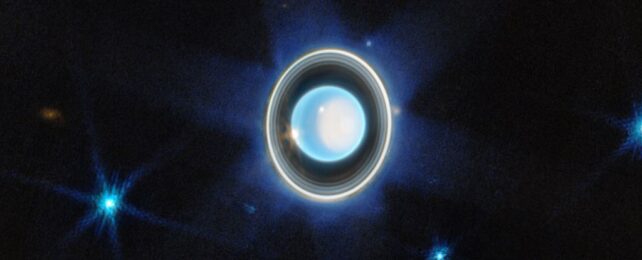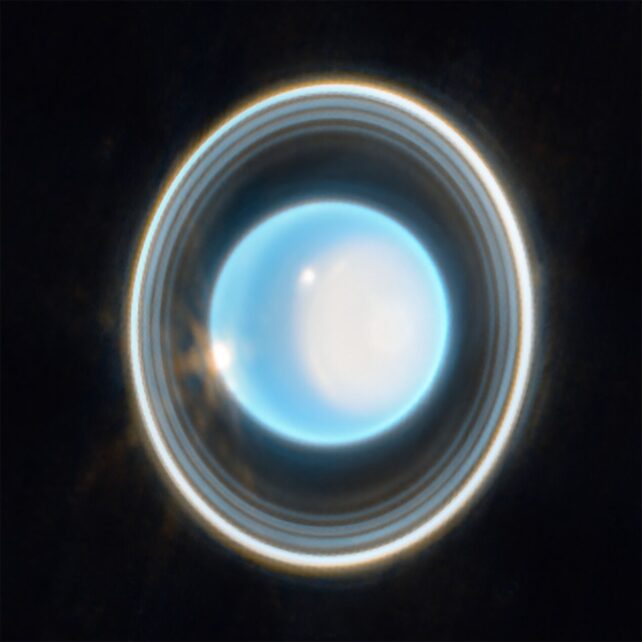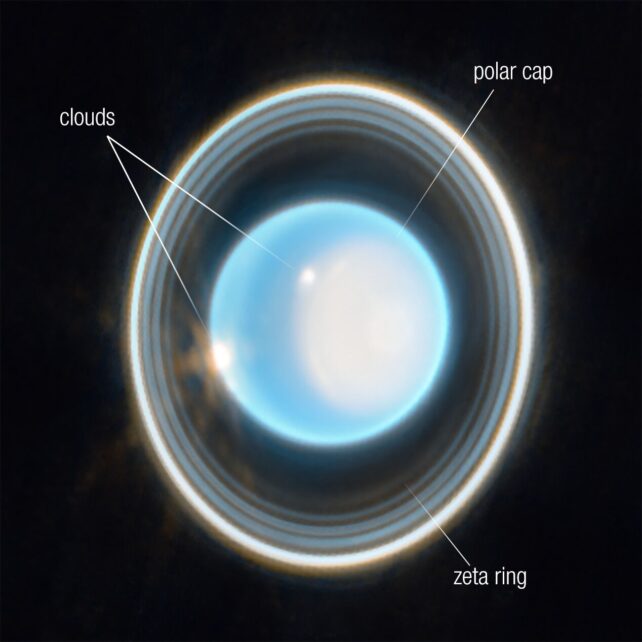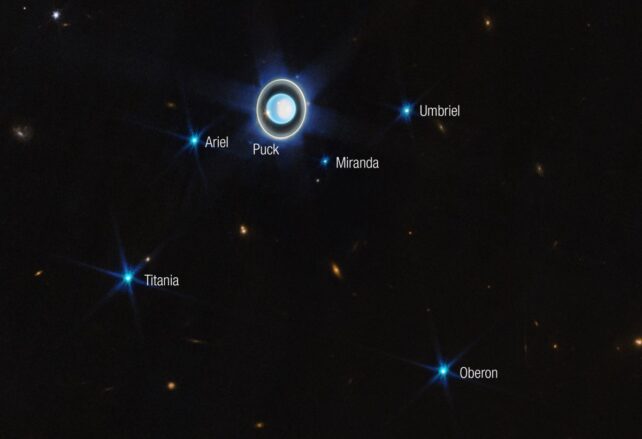
We've just been given a spectacular new perspective on what is possibly the oddest ball in the Solar System.
The James Webb Space Telescope has turned its golden, infrared gaze on the enigmatic seventh world from the Sun, Uranus – and the image it returned has revealed the turquoise planet in gleaming glory. Moons, rings, and all.
Every planet and dwarf planet in the Solar System has its own set of quirks and idiosyncrasies that make it special, but Uranus is truly peculiar. The icy, gelid world, at first glance, looks fairly unremarkable, but the closer you look, the weirder – and more beautiful – it gets.
But you have to look beyond the colors our own eyes can detect, in which Uranus appears to be a relatively featureless orb of pale blue. In thermal imaging, for example, comprising radio and infrared wavelengths, scientists have been able to measure the physical properties of Uranus' faint, icy rings.

JWST is the most powerful space telescope ever launched, and it sees the Universe exclusively in infrared and near-infrared. That makes it perfect for capturing the stretched glow of light that was shed billions of years in our past.
Thankfully that infrared sensitivity can do more than look deep into space to peer at the dawn of the Universe; it's just as useful for looking at things closer to home to help understand the mysteries of our own Solar System. Since infrared wavelengths can reveal a lot about the workings of Uranus, JWST has been booked to take a closer look-see.
Although the time allocated was a brief 12 minutes, the space telescope could still resolve never-before-seen details.
One thing you'll quickly notice about Uranus is its unusual rotation, tipped over on its side in relation to its orbital plane. This means its polar seasons are very different from those of the other planets. During its 84-year orbit, Uranus's poles will receive the full brunt of the Sun's glare during summer, but complete darkness come winter.
When Voyager 2 flew by Uranus in 1986, it was summer on the south pole; now, it is late spring at the north pole, with summer due to hit in 2028.

This means the JWST was able to image a feature unique to Uranus: a polar brightening as the planet moves into the full light of the summer Sun. What causes this bright polar cap is unknown, but scientists thought the unprecedented resolution provided by the JWST might provide some new insights.
And they weren't wrong. The data reveals a subtle but unmistakable region of enhanced brightening at the center of the polar cap.
We still don't know why, but scientists will be able to take this information into account as they study the phenomenon in detail.
Other bright features seen in the image are clouds, linked to storm activity in the predominantly hydrogen and helium atmosphere of the ice giant.
Though hardly as famous as Saturn's stunning set of rings, Uranus has just over a dozen humble circlets itself. The JWST imaged 11 of the 13 known rings circling the planet, including the two faint, dusty inner rings that are so dim they weren't discovered until Voyager 2 dropped by in 1986.
Future JWST observations, scientists hope, will also be able to capture the two faint outer rings, beyond the main group.

Finally, the telescope captured many – but not all – of Uranus' 27 known moons. Some are too faint to be seen. But these moons have very different orbits. The six moons seen in the image above all share their orbital plane with Uranus' equatorial plane, as do the smaller, inner moons. But Uranus also has a collection of irregular, much more distant moons that have inclined, elliptical orbits, similar to those of Jupiter's irregular moons.
Studying the particulars of these moons may be useful in understanding how Uranus got to be the way it is, a thorny question that evades simple answers.
Further JWST observations of Uranus are ongoing, or scheduled for the future. Let's hope they can help scientists make a compelling case for sending a dedicated probe to this intriguing world.





No comments:
Post a Comment